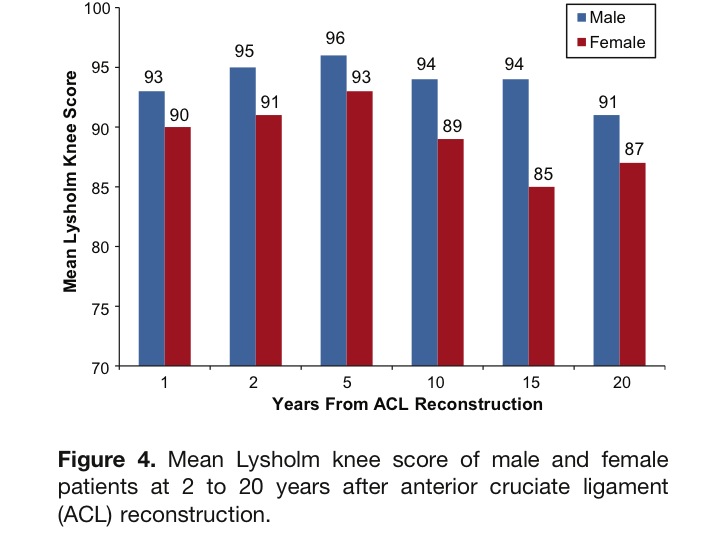Up to 250,000 athletes will sustain an ACL injury each year and the majority of these patients will require Physical Therapy before and/or after their ACL reconstruction surgery. These athletes may be at risk of future lower extremity injuries either on their involved or uninvolved lower extremity because of inadequate physical therapy, poor movement patterns, and psychological factors including fear of re injury or decreased confidence in their knee. Strength, balance, and movement impairments up to a year after surgery. We know athletes like Adrian Peterson below can have MVP season after ACL injury but, the literature was thin on long term outcomes following ACL reconstruction.
A recent article in the American Journal of Sports Medicine followed patients status post ACL reconstruction using their own knee tendons, Bone Patellar Bone, as grafts (Thompson et al. 2015). A total of 90 patients were followed up to 20 years after their initial ACL repair surgery to determine their future injuries, return to play, and overall function. 32/90 patients sustained another ACL injury either on the involved or uninvolved side by the 20 year follow up. Surprisingly, the vast majority of these occurred in the non involved limb indicating the risk factors for future injury may be related to altered nervous system function including balance and coordination deficits. The greatest risk of non involved ACL injury occurred in those younger than 18 at the time of their first injury.
9% of patients sustained a tear of their reconstructed knee. The greatest predictors of injury to the graft site included smaller graft angle. Females, at greater risk for an initial ACL injury, had a lower re injury rate, lower subjective confidence and functional scores, and decreased participation in higher level activities compared to males. This lower rate of participation in strenuous activities may have placed the graft at a lower risk leading to lower rates of injury.
In those without subsequent knee injuries, their functional outcomes remained relatively high as seen below. Prior research has demonstrated patients with or without ACL repair after ACL injury will develop osteoarthritic changes in their knee. In this sample of patients, 61% demonstrated some bone and cartilage changes on x ray but many of these patients denied pain or osteoarthritic symptoms. Thus, more evidence of positive findings on imaging within an asymptomatic population.
In short, this study is a great long term study on patients status post ACL reconstruction. The high rates of re injury especially in the non involved leg indicate a need for further training and physical therapy interventions. This will treat residual impairments including balance, coordination, and agility allowing patients to function at the highest level of sport possible without increased risk of injury.

